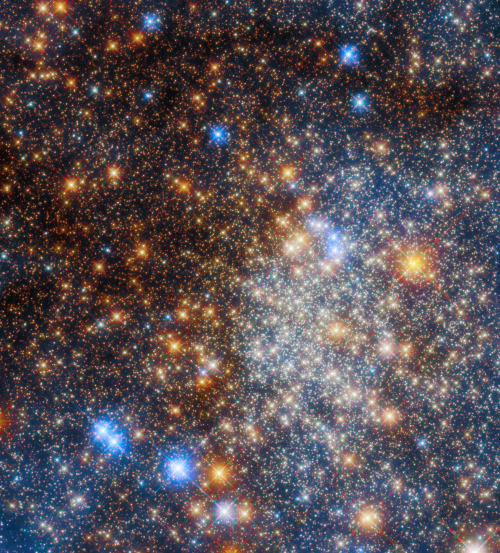Wed. 11/6: We'll Be Closed Tonight - We Expect Lots Of Clouds Rolling In After Sunset. We'll Try Again
Wed. 11/6: We'll be closed tonight - we expect lots of clouds rolling in after sunset. We'll try again next week!
More Posts from Bsuobservatory and Others

Pumpkin space latte, anyone? ☕
Hubble captured this festive array of stars, Terzan 12, found in the Milky Way about 15,000 light-years from Earth. The stars in this cluster are bound together by gravity in a sphere-like shape and are shrouded in gas and dust. As the starlight travels through that gas and dust to Earth, blue light scatters, leaving the redder wavelengths to come through.
Download the full-resolution image here.
Make sure to follow us on Tumblr for your regular dose of space!

The Black Eye Galaxy. Image Credit: Shane Johnson | Jamie Kern | BSU Observatory.
Imaged in luminance and photometric R, V and B filters. Total exposure time ~25 minutes.
The Black Eye Galaxy (M64) is a relatively nearby spiral with an extraordinary amount of dark dust partially obscuring its nucleus. Red hues peeking out in these dust lanes are caused by reddening when the dust scatters the bluer light from stars embedded within it. The color difference between the center and spiral arms is due to an average age difference between the stars in these locations--blue stars have short lives, so as the star population ages the overall color appears more red.
So far, we think the sky will cooperate enough for us to see tomorrow's eclipse! We'll be handing out eclipse glasses around DMF tomorrow, and some other locations on campus from 10:30 am - 2:45 pm. Check back one more time in the morning about the weather.
Many things in space stay the same for a human lifetime, but not the Bat Shadow. Hubble pictures taken 404 days apart show it “flapping” as the shadow changes position. It’s the result of a saddle-shaped disk: https://bit.ly/3Y5qu7W
Skyshark


Man sees what he wants to see, and so it is with the Dark Nebula LDN 1235. This collection of dust in the constellation Cepheus is very reminiscent of a shark. At just 650 light years away, it is just around the corner.
Object type: Dark nebula
Constellation: Cepheus
Total exposure: 720 minutes
Image data:
- RGB 144 x 300s / Gain 100
- 25 flats
- 25 Bias
- 25 Darks
Setup:
- Skywatcher 150/750 F5 PDS
- Omegon 571C
- Skywatcher EQ6R Pro
- Two Asi 178mm as guide cam
We had an error on here earlier - fixed now.

Public nights are here!
Wed. 11/20 - We'll be closed tonight due to clouds.

Picture of the Day!
The Pencil Nebula, 800 light-years away and nearly 5 light-years long, is a small part of the Vela supernova remnant. This supernova shock wave travels through space at over 500,000 kilometers per hour!
Image credit: Helge Buesing

The Fireworks Galaxy. Imaged at Bridgewater State University Observatory, Fall 2019. Reprocessed 2025. Credit: BSU Experimental Astrophysics Research (BEAR) Team.
Wed. 11/13: We expect gorgeous, clear skies tonight! We'll be open, 6 -7 for public night and from 7 - 9 for attendees of Open Lab Night.
Please be aware the elevator which goes to the 5th floor (observatory) is out of order. We will only be accessible by stairs tonight, though you can still take the other elevator to the 4th floor.

STEM Education, Astrophysics Research, Astrophotography, and Outreach located at 24 Park Ave., Bridgewater MA. You'll find us on the two outdoor balconies on the 5th floor, and you'll find our official website here: https://www.bridgew.edu/center/case/observatory .
150 posts